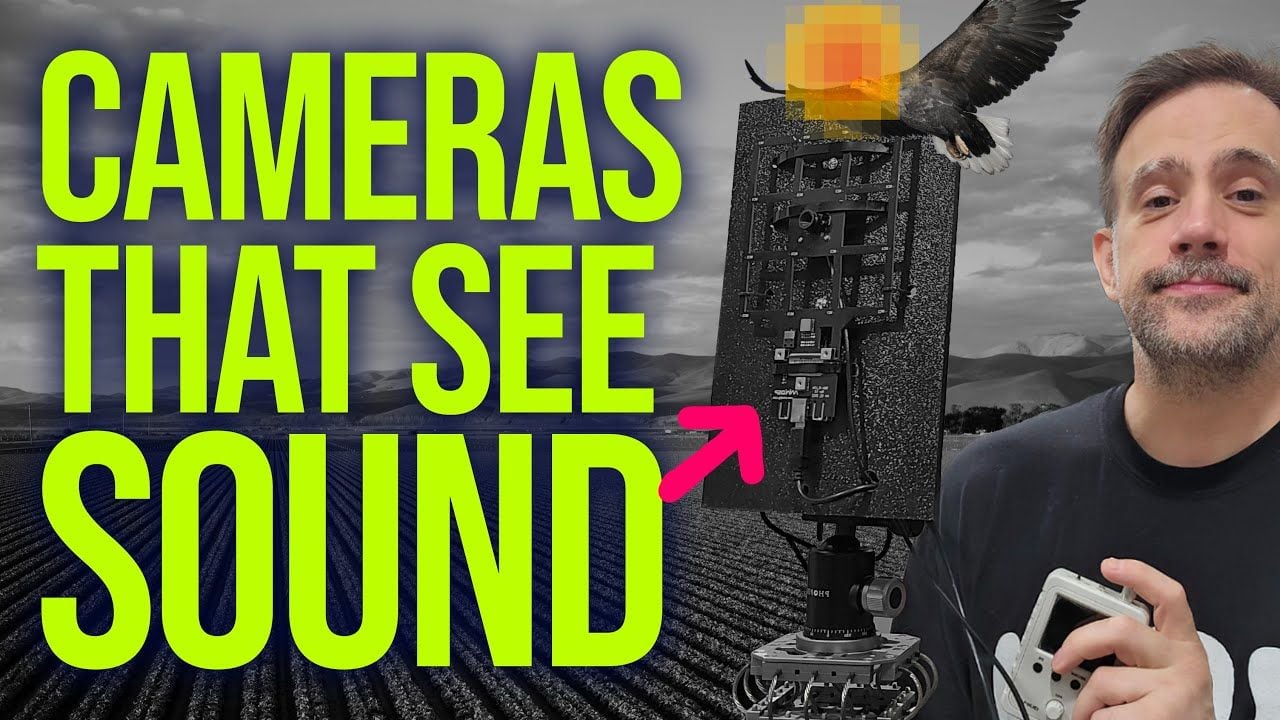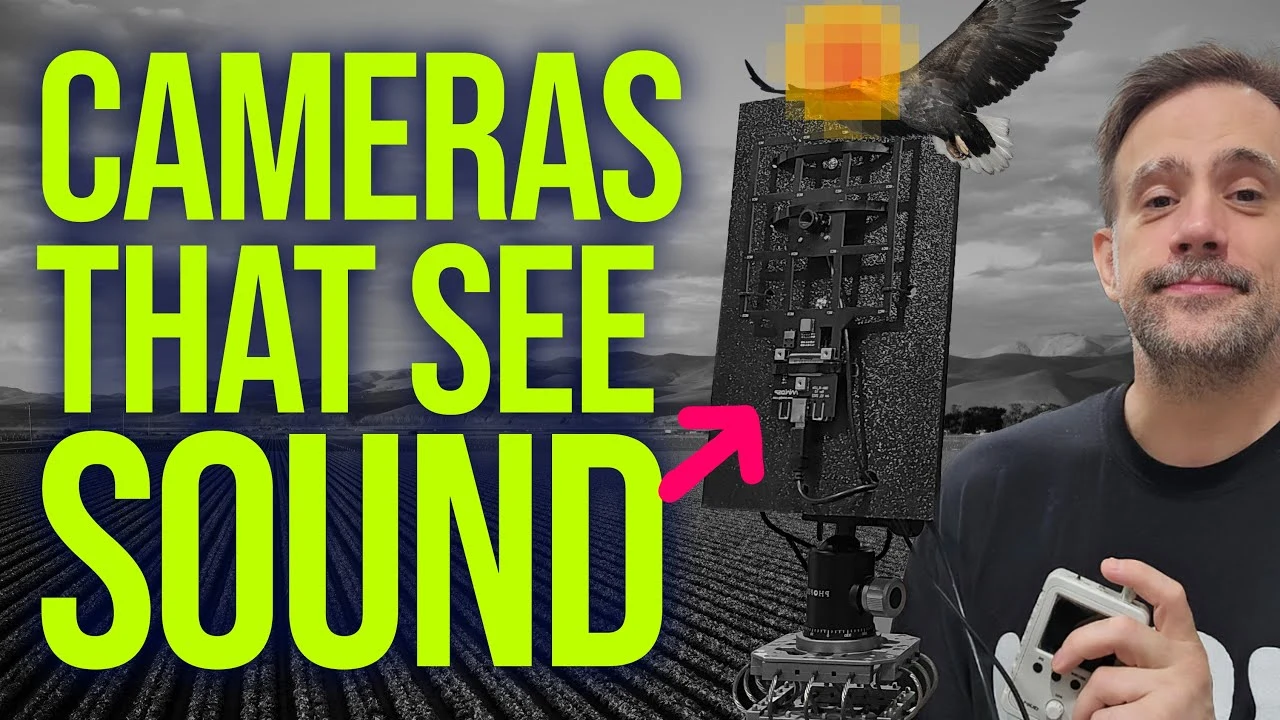
[ad_1]

Creating an affordable acoustic camera is now achievable with the right blend of accessible technology and open-source software. By using smartphones and budget-friendly equipment, you can replicate the capabilities of high-end motion amplification systems and acoustic imaging devices. This innovative approach opens up new possibilities for sound visualization and analysis, making it accessible to a wider audience.
Harnessing Motion Amplification Technology
Traditionally, motion amplification systems are expensive, limiting their accessibility to many individuals and organizations. However, smartphones offer a viable alternative, thanks to their advanced sensors and processing capabilities. These devices can detect subtle vibrations and movements, providing a cost-effective solution for sound visualization. By using the power of smartphones, you can unlock the potential of motion amplification technology without the need for expensive specialized equipment.
- Smartphone sensors can detect subtle vibrations and movements
- Cost-effective solution for sound visualization
- Accessible to a wider audience
Building Your Acoustic Camera
To construct a budget-friendly acoustic camera, consider using a combination of affordable components such as a Raspberry Pi, microphones, and a global shutter camera module. This combination effectively captures sound and motion data, offering a detailed view of acoustic environments without the high costs associated with traditional systems. By carefully selecting and integrating these components, you can create a powerful tool for sound visualization and analysis.
- Raspberry Pi provides a compact and affordable computing platform
- Microphones capture sound data for precise analysis
- Global shutter camera module eliminates image distortion
Here are a selection of other articles from our extensive library of content you may find of interest on the subject of cameras :
Using Software and Frameworks
The Python framework Ocular plays a crucial role in acoustic beamforming, allowing precise sound data processing and visualization. This powerful tool enables you to extract meaningful insights from the captured sound and motion data. While developing your software, you might face challenges with dependency management. However, the open-source community often provides valuable solutions and support to overcome these hurdles. By using the expertise and resources available within the community, you can streamline your development process and achieve your goals more efficiently.
- Ocular framework enables precise sound data processing and visualization
- Open-source community provides solutions and support for dependency management
- Use community expertise to streamline development process
Exploring Practical Applications
The applications of DIY acoustic cameras extend far beyond simple sound visualization. Motion extraction techniques can pinpoint sound sources and vibrations, making them valuable tools in various fields. For instance, in healthcare, video analysis can be used to monitor heartbeats and vitals, showcasing the technology’s potential for non-invasive monitoring. In security, acoustic imaging can help detect and locate potential threats or anomalies. These practical applications demonstrate the versatility and value of affordable acoustic cameras.
- Motion extraction techniques pinpoint sound sources and vibrations
- Healthcare applications include non-invasive monitoring of heartbeats and vitals
- Security applications involve detecting and locating potential threats or anomalies
Addressing Technical Challenges
While building your DIY acoustic camera, you may encounter technical challenges that need to be addressed. One common issue is the rolling shutter effect in video cameras, which can compromise data accuracy. To ensure precise data capture, it is recommended to opt for global shutter cameras. These cameras eliminate image distortion caused by the rolling shutter effect, enhancing the reliability and accuracy of your acoustic imaging system. By carefully selecting the right components and addressing technical challenges, you can optimize the performance of your DIY acoustic camera.
- Rolling shutter effect in video cameras can compromise data accuracy
- Global shutter cameras eliminate image distortion and enhance reliability
- Careful component selection and addressing technical challenges optimize performance
Conducting Innovative Experiments
DIY acoustic cameras open up a world of possibilities for conducting innovative experiments and exploring acoustic phenomena. One fascinating area of exploration is the use of thermal cameras to visualize sound waves and heat generation from sound. By capturing the thermal signatures associated with sound propagation, you can gain unique insights into the behavior and characteristics of sound waves. These experiments deepen your understanding of sound dynamics and open new avenues for research and discovery.
- Thermal cameras visualize sound waves and heat generation from sound
- Capture thermal signatures associated with sound propagation
- Gain unique insights into sound dynamics and behavior
Engaging with Community and Support
The open-source community plays a vital role in advancing the development and accessibility of DIY acoustic cameras. Platforms like Patreon provide support and encourage engagement with ongoing projects. By participating in these communities, you can connect with like-minded individuals, share knowledge, and collaborate on innovative solutions. The community offers a wealth of resources, tutorials, and forums where you can seek guidance, troubleshoot issues, and refine your skills. Engaging with the community not only benefits your own projects but also contributes to the collective advancement of cost-effective acoustic imaging solutions.
- Open-source community advances development and accessibility of DIY acoustic cameras
- Platforms like Patreon provide support and encourage engagement
- Collaborate, share knowledge, and refine skills within the community
By unlocking the potential of DIY acoustic cameras, you can explore the fascinating world of sound visualization and analysis. With the right combination of accessible technology, open-source software, and community support, you can create powerful tools that rival the capabilities of expensive commercial systems. Whether you are a researcher, engineer, or enthusiast, building your own acoustic camera opens up a realm of possibilities for innovation, experimentation, and discovery. Embrace the potential of DIY acoustic imaging and embark on a journey to uncover the hidden dynamics of sound.
Media Credit: Benn Jordan
Filed Under: Camera News, DIY Projects, Guides
Latest Geeky Gadgets Deals
Disclosure: Some of our articles include affiliate links. If you buy something through one of these links, Geeky Gadgets may earn an affiliate commission. Learn about our Disclosure Policy.
[ad_2]